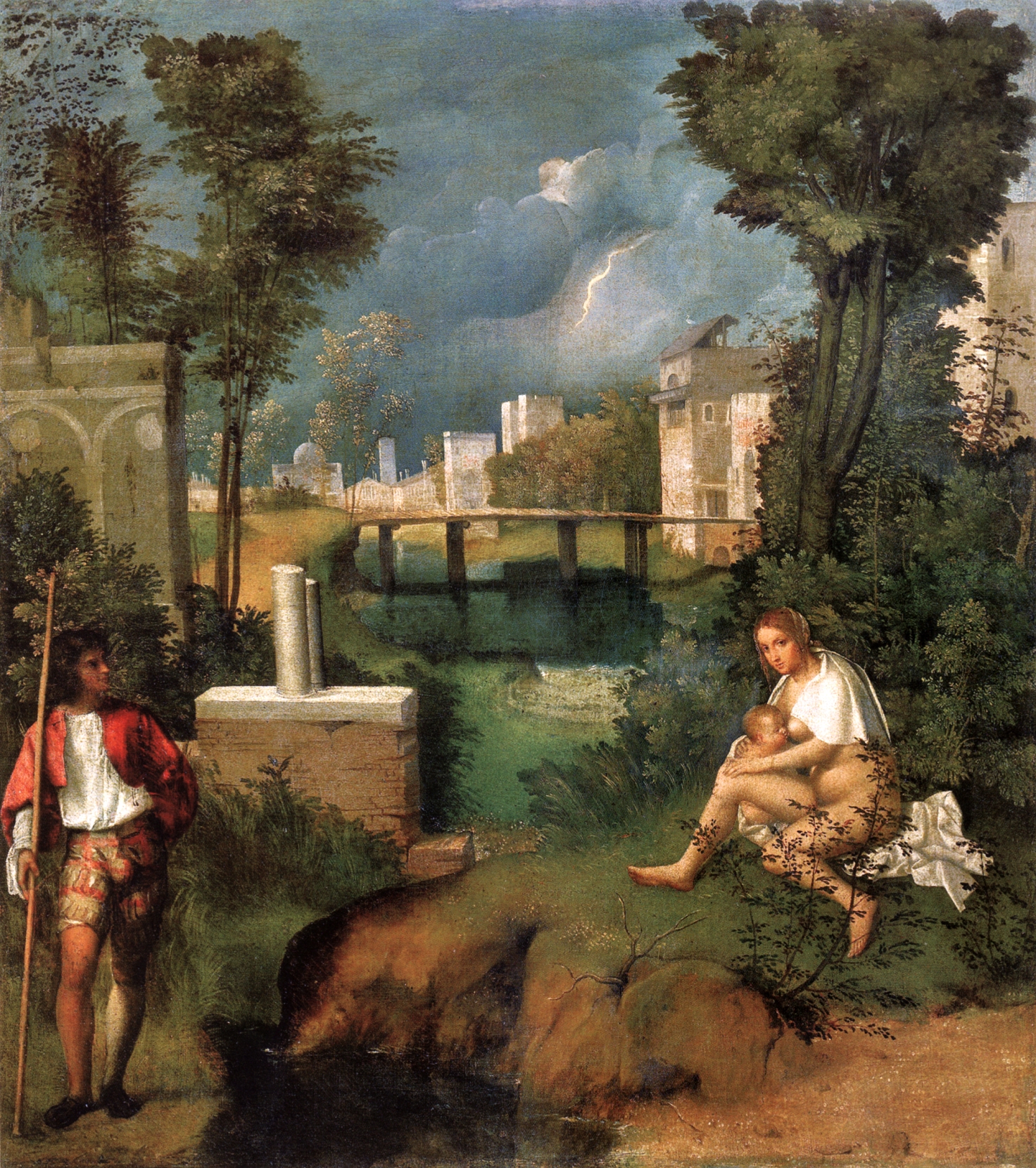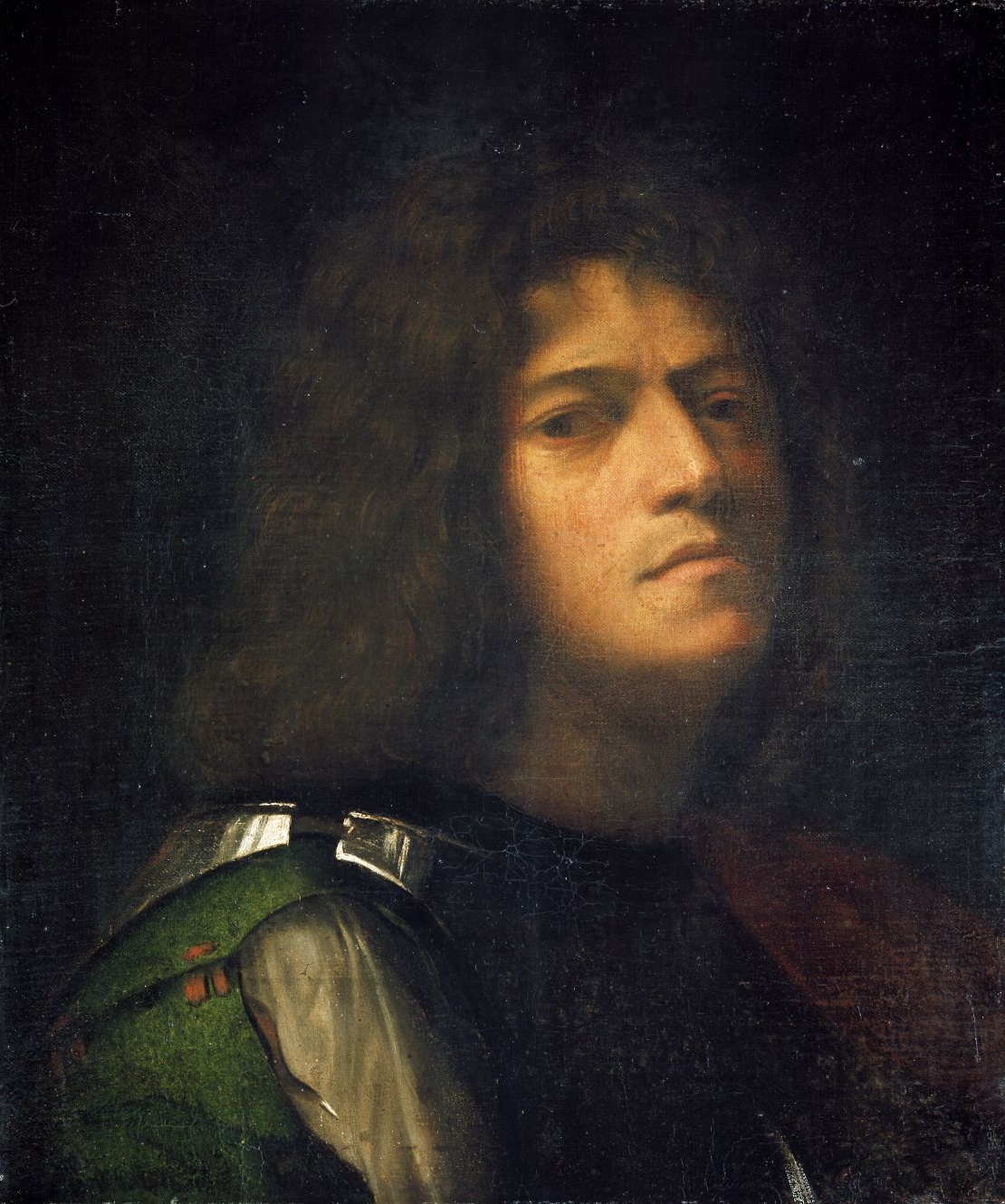Well, today is my birthday. On this occasion I would like to share with you one of my favorite paintings - actually, I think I fell in love with art history because of it. It was the first painting that really "spoke" to me, even though at first, I saw it on a slide in art history class in my high school. It is a very mysterious The Tempest created by a Renaissance Venetian painter, Giorgione. There is no contemporary textual explanation for The Tempest, and ultimately, no definitive reading or interpretation. To some it represents the flight into Egypt; to others, a scene from classical mythology (Paris and Oenone) or from an ancient Greek pastoral novel. According to the Italian scholar Salvatore Settis, the desert city would represent the Paradise, the two characters being Adam and Eve with their son Cain: the lightning, as in ancient Greek and Hebrew times, would represent God who has just ousted them from Eden. Others have proposed a moral allegorical reading, or simply concluded that Giorgione had no particular subject in mind.
The truth will probably remain unknown. On the right a woman sits, suckling a baby. She could be a gypsy, or in some people's eyes a prostitute. Her pose is unusual - normally the baby would be held on the mother's lap; but in this case the baby is positioned at the side of the mother, so as to expose her pubic area. A man, possibly a soldier, holding a long staff or pike, stands in contrapposto on the left. He smiles and glances to the left, but does not appear to be looking at the woman.
Art historians have identified the man alternatively as a soldier, a shepherd, a gypsy, or as a member of a club of unmarried men. X-rays of the painting have revealed that in the place of the man, Giorgione originally painted another female nude. One may also note the stork on the rooftop on the right. Storks sometimes represent the love of parents for their children. Apart from his larger commissioned works, most of what Giorgione painted were smaller paintings, designed for personal collectors to keep in their homes. This is one such piece, measuring 33 by 29 inches, commissioned by Gabriele Vendramin, a Venetian noble. It is also said to be the first landscape in Western painting. As it is a day for summaries for me, I want to thank all of you - DailyArt is my life for more than three years now and without you, our users it will be nothing.
Thank you :)
- Zuzanna


 Giorgione
Giorgione